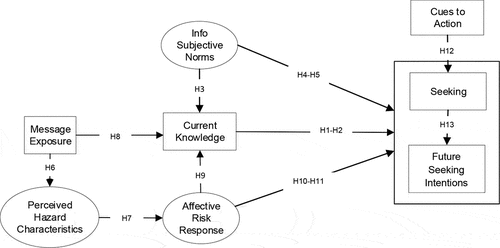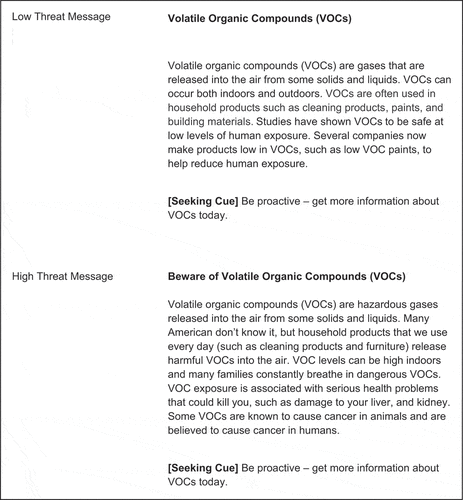Figures & data
Figure 1. Study conceptual model and hypotheses based on the reduced risk information seeking and processing model (Yang et al., Citation2014) and risk information seeking and processing model (Griffin et al., Citation1999).

Figure 2. Example low and high threat messages for Volatile Organic Compounds (VOCs). Similar messages were also produced for Arsenic and Bisphenol A (BPA) risks. Depending on the condition, messages were presented with or without the seeking cue shown here.

Table 1. Descriptive Statistics and Pearson Correlations for Main Model Variables (N = 1,823).
Table 2. Standardized Results and Significance Levels for Structural Model Paths (N = 1,823).
Table 3. Overview of Study Predictions and Outcomes.
